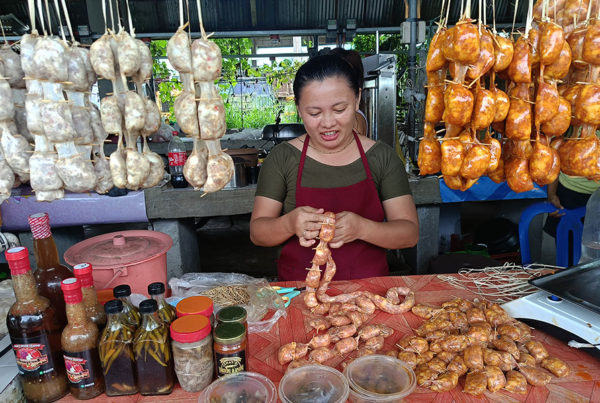Offshore mining to surely impact on food, jobs
THE impending operations of the Large-scale Offshore Mining Project in the Lingayen Gulf by Iron Ore Gold and Vanadium Resources Philippines Inc. will have a serious impact on the food requirement of nearly the whole country as well as the livelihood of thousands of fishermen in Pangasinan.
This was the opinion of lawyer Asis Perez, former national director of the Bureau of Fisheries and Aquatic Resources (BFAR) who also served as undersecretary for fisheries of the Department of Agriculture during the continuation of the Question Hour on the proposed large-scale mining project in the Lingayen Gulf before the Sangguniang Panlalawigan on October 11.
“What will happen to the fish being generated by the Lingayen Gulf if this project will be allowed?” Perez asked.
Now a senior legal adviser of Tanggol Kalikasan and convenor of Tugon Kabuhayan, an advocacy group advocating for sustainable and continuous production of food, Perez said 35 percent of the entire bangus production in the country, by industry estimate, comes from the Lingayen Gulf.
He said the livelihood of thousands of fishermen and other people dependent on the fishing industry seemed to have not been taken into consideration when the project was given the green light to conduct its exploration activity and soon extraction activity.
“I am sure that you know that in order to extract 25 million dry metric tons of minerals, you have to be moving four times than that. Can you imagine the waste that would be posed by this big volume of materials to the people and households of the coastal areas?”
He said when they extract materials from underneath the sea floor, marine life which include fry, larvae, fish eggs, plants and planktons will surely die, leaving the Lingayen Gulf virtually barren for generations.
He said there are over 2,000 hectares of fishponds in Dagupan and Binmaley which are dependent on the quality of water in order to produce milkfish but which will be adversely affected by the offshore mining activity in the Lingayen Gulf.
He added that Lingayen Gulf is also very rich in bio-diversity where one can find many species of fish, marine life and birds and is located in a place where the fresh water and sea water mix, a condition that provides the necessary environment for the growth of fish.
Taking into consideration all of these and because the Lingayen Gulf has many natural features like the Hundred Islands National Park, teeming with outdoor recreation, then President Fidel V. Ramos issued Proclamation No. 156 in 1993 proclaiming the entire Lingayen Gulf as an environmentally critical area to ensure its protection and preservation, Perez said.
He said if the offshore mining project is allowed, production of fish will be seriously endangered as Vanadium Resources is set to extract 25 million metric tons of materials underneath the sea floor of the Lingayen Gulf.
He added that Lingayen Gulf is also a major spawning ground of fish from the other parts of the ocean, including from the West Philippine Sea, come to the Lingayen Gulf to lay their eggs during the spawning season and the fry that they produce migrate to various seas.
“He said the impact of this project will not be confined in six towns (Sual, Labrador, Lingayen, Binmaley, Dagupan and San Fabian) once it starts its operations as any disturbance of the water in one area will spread to other areas.
He warned that there are 2,800 fish cages in Sual, Bolinao, Anda and Damortis in La Union, each producing 30 metric tons of fish or 84,000 metric tons, would be likely laid to waste once they cease operations if the offshore mining activity finally takes off.
Perez hopes University of the Philippines Marine Science Institute in Bolinao UPMSI will soon join in the discussion to determine the mining project’s mpact on the more than 300,000 giant clams or “taklobos”being raised and preserved by UPMSI. (Leonardo Micua)
Share your Comments or Reactions
Powered by Facebook Comments







